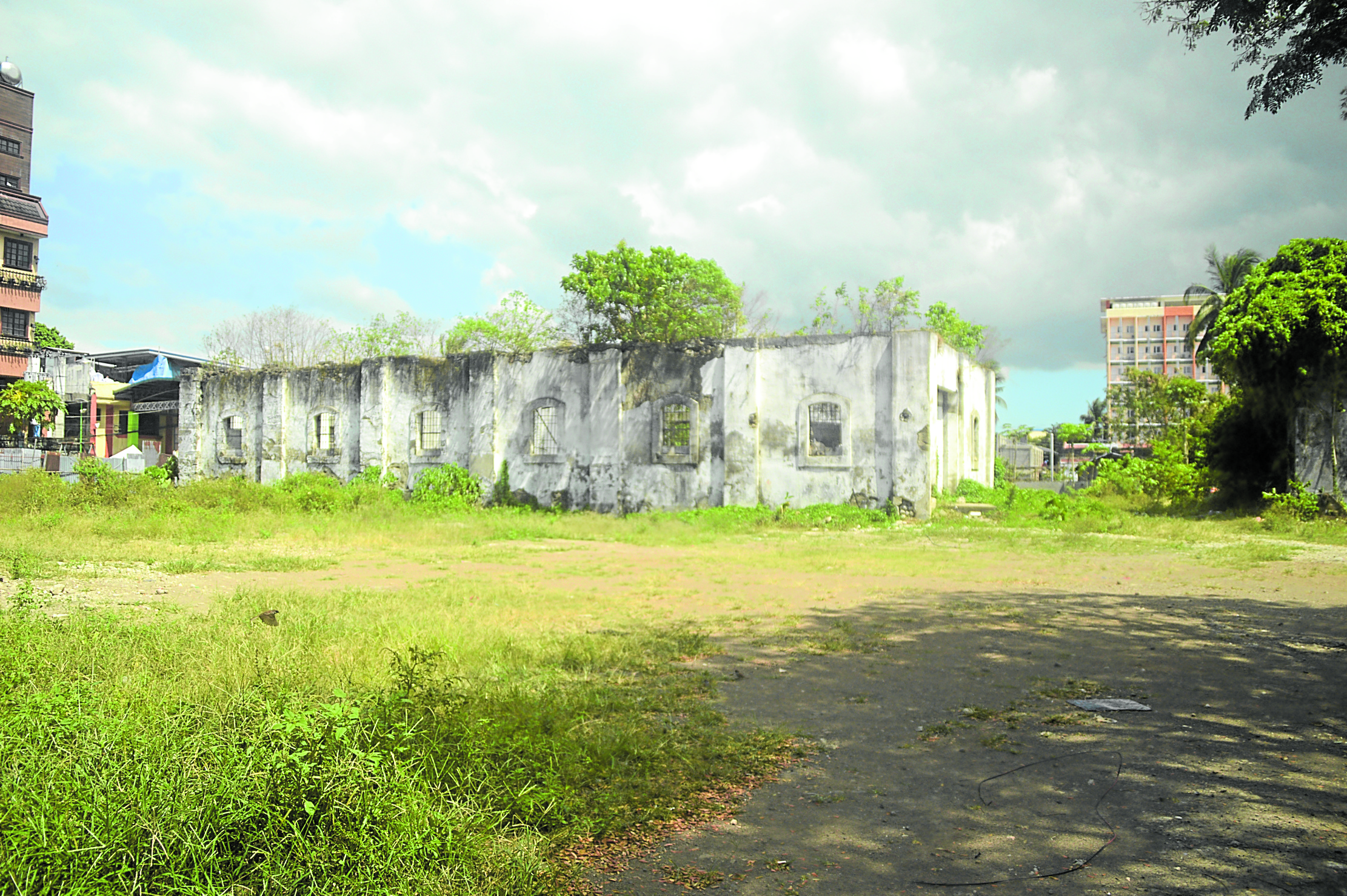Heritage advocates fight to save Naga’s historic jail, post office

IMPORTANT RUINS This shell of a 19th century jailhouse in Naga City is listed in the Philippine Registry of Heritage. But the building, which nowsits on a private lot shown in this March 9 photo,
is up for demolition, a plan being opposed by preservation groups of Camarines Sur. —MAIDA BORAGAY
LEGAZPI CITY—Preservationists are fighting to save two 19th century buildings in Naga city, which used to be the jail and post office of the province of Camarines Sur, from demolition and removal from the country’s registry of historical landmarks.
The Nueva Caceres Heritage Movement Inc., Naga City Arts and Cultural Coalition (NCACC) and United Architects of the Philippines Camarines Chapter are objecting the plans to delist Naga City’s old post office known as “Administracion de Coreo” and the old provincial jail from the Philippine Registry of Heritage.
The two buildings, both now shells of their former selves, sit on a lot in Barangay San Francisco now owned by the Nagaland Development Corp. (NDC), which sought to have the buildings delisted as historical sites to pave the way for their demolition.
In a March 4 committee on culture and the arts hearing at the City Council, the preservationists and the NDC agreed on a March 25 deadline to present evidence on the historical, cultural and architectural significance of the two buildings.
National Historical Commmission of the Philippines chair Emmanuel Franco Calairo told NDC auditor William Enrile II in a Jan. 10 letter that the local structures have been designated as local heritage sites through City Resolution 2014-038, and is protected by City Ordinance 2003-003.
Article continues after this advertisementREAD: New book on Naga cathedral sheds light on Bicol clergy history
Article continues after this advertisement“Hence, we cannot process the petition until the structures are delisted in the [Philippine Registry of Cultural Properties] and the previous resolution and ordinance are repealed,” Calairo said.
The Philippine Registry of Cultural Properties (Precup) is now called the Philippine Registry of Heritage.
On Nov. 16, 2022, the city issued a cease-and-desist order to prevent the demolition of the two buildings while local officials determine their fate.
Significance
The Nueva Caceres Heritage Movement has gone on Change.org to stop the demolition and its petition has so far garnered about 2,000 signatures.
NCACC, through its president Victor Dennis Nierva, stressed in a statement that losing the buildings would also mean a loss for the preservation of cultural elements, historical evidence and architectural and engineering lessons.
“The desire to preserve the edifices of the Old Provincial Jail extends beyond their former role as the Carcel Provincial of Camarines Sur; it also encompasses their historical significance as the site of the Administracion de Correo and, especially, the Obras Pias which used the buildings for charity works,” the group said.
Obras Pias (literally means pious works) was a charitable institution in the Philippines created by the Spaniards in 1827.
Revolutionary leaders
The city council, on the other hand, noted in a resolution that one of the reasons to preserve the edifices was that it was where revolutionary leaders—the Tagalog Elias Angeles and the Bicolano Felix Plazo—stayed during the revolution against the Spanish rule.
Naga City Mayor Nelson Legacion, however, said this claim was yet to be proven.
But Nierva said that the two buildings have bigger significance than whether or not the two revolutionaries were held there.
He said that what was more important was the year of their construction, 1826, which made them the only remaining early 19th century building in the city that is related to civic history.
“What evidence do we still need? Should [we] deprive our kids a window, a small window, to our civic past? This alone should move us,” he said.
Landmarks
Nierva noted that historical jailhouses elsewhere in the country have become attractions.
“The National Museum in Ilocos, the Museo Sugbo in Cebu, the National Museum in Iloilo City and the Provincial Jail in Sorsogon City—these jailhouses are now landmarks,” he said.
The NCACC also said that jailhouses are a testament to the evolving philosophy on criminal justice in the country.
“This is pertinent not just to historians, but also to lawyers and to society in general—particularly because the concept of justice remains a core area of reflection even in this day and in these times,” NCACC said.
NCACC said there must be an “adaptive reuse of these structures to meet the needs of commerce and modernity,” adding, “It has to be noted that the creative and cultural community of Naga City, particularly groups and institutions aligned with heritage conservation, are not antagonistic to the commercial potential of the site on which the remains of the old jail is located.”